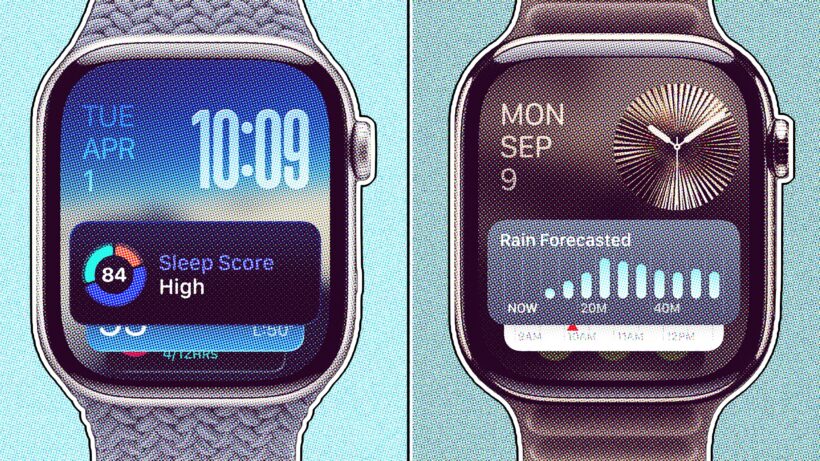If you're considering the latest addition to the Series lineup, use this guide to discover the key changes
Apple has officially unveiled the Apple Watch Series 11, and, as has become the tradition for Apple’s flagship smartwatch, it’s a story of iterative refinement rather than revolution.
It follows the excellent Watch Series 10 released in 2024—a device that represented a significant makeover and kicked off Apple’s latest three-generation design cycle. As such, the Series 11 was never going to feature a major physical leap from its predecessor.
Instead, the focus is on a couple of major new software-driven health features and some subtle (but potentially significant) hardware tweaks.
Are these changes enough to warrant an upgrade, especially for those who just bought a Series 10 (or even a Series 9)? As always, it’s a complicated question, and one we won’t have a definitive answer to until we’ve completed our full, in-depth review.
Below is our early breakdown of how the Series 11 compares to the Series 10. However, once our Series 11 review is live, check back for our full recommendation.
Price and availability
The Apple Watch Series 11 launches at the same starting price as its predecessor last year, at $399. Interestingly, though, it arrives at a slightly reduced asking price in some countries, like the UK, where it’s available starting from £349 (compared to £399 for the Series 10).
Like we’ve seen many times before with Series watches, Apple no longer officially sells the Series 10. However, that doesn’t mean it isn’t available—plenty of retailers will have stock to clear over the coming months. With the new model now announced, it’s also fair to assume there will be some healthy discounts on the 2024 smartwatch.
We’ve included a live widget below to help you find the best price quickly.
Design and display

The Apple Watch Series 10 introduced a significant design change, with a bigger and thinner case in new 42mm and 46mm sizes. The Series 11 retains this exact form factor.
The key change this year is durability. The aluminum models of the Series 11 feature a new Ion-X glass with a ceramic coating that Apple claims is 2x more scratch-resistant than the glass on the Series 10.
Ultimately, most people will wear this device without a screen protector or case, which means this is a welcome improvement. Meanwhile, the premium titanium models continue to use a sapphire crystal display.
There are also a few new color finishes, including a new space gray for aluminum and polished slate and gold for titanium. Otherwise, though, this appears to be business as usual—and we likely won’t see any dramatic changes in next year’s update, either.
Health and fitness tracking

This is where the biggest new features have landed, but there’s a huge caveat. The two headline announcements—hypertension notifications and a native Sleep Score—are groundbreaking additions to the Apple Watch ecosystem.
The hypertension feature works passively in the background to detect chronic signs of high blood pressure, while the Sleep Score finally gives users a simple, actionable metric for their nightly rest.
However, both of these are watchOS 26 software features, and Apple has confirmed they will be rolling out to the Apple Watch Series 9, Series 10, and Ultra 2 (as well as arriving on Ultra 3).
This is great news for current owners. However, it also means there are virtually no upgrades in this area if you have a Series 10. The gap is, however, beginning to open up for those on a Series 8 or older, who won’t receive all the latest software smarts.
Battery life and performance

This could be the sneakiest—and most important—upgrade on the Series 11. For a decade, Apple has stubbornly stuck to an official ‘all-day 18-hour’ battery life estimate for its Series watches. However, the company has slapped its latest Series device with a 24-hour estimate.
In our testing of the last few generations, we’ve found the real-world battery life often comfortably exceeded the 18-hour claim, usually lasting around 25-30 hours.
This new, higher official estimate suggests we could be pushing into genuine two-day territory, even with the always-on display active. If so, it would be a huge quality-of-life improvement, reducing the daily charging anxiety that has long been the Apple Watch’s biggest flaw.
This could be the single best reason to upgrade, but we’ll have to wait for our full review to see how it performs in the real world (and how much it varies between the two case sizes).
Early verdict
Based on the initial announcement, this would appear to be an easy decision for anyone who bought a Series 10: you should stick with what you have. The most significant new health features are coming to your watch via a free software update, and the hardware changes are minimal.
However, like with our Ultra 3 and Ultra 2 comparison, it wouldn’t be right to deliver a definitive recommendation one way or the other until our Series 11 testing is complete. And that’s especially true given that the battery life is the big unknown here—and could potentially prove to be a big difference-maker.
If our full testing confirms that the Series 11 is now a solid two-day watch, that could be a compelling reason for some to make the jump (and definitely for existing Series owners who don’t want to leap the Ultra lineup).
What we do know from the initial announcement is that the upgrades are beginning to add up for those with an Apple Watch Series 8 or older. The combination of the larger display, improved durability, and potentially much better battery life could make for a significant leap forward.




